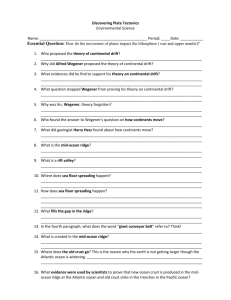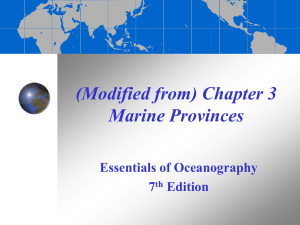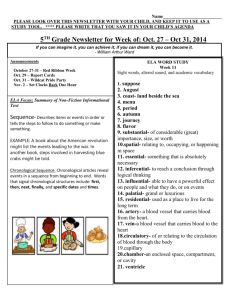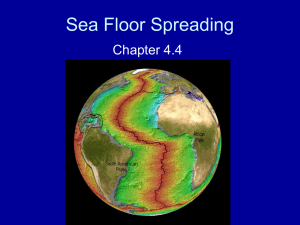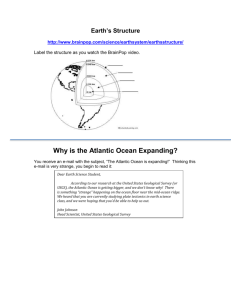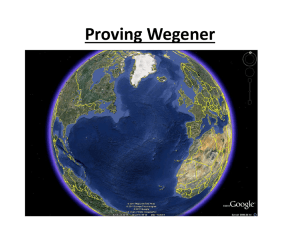Outline
advertisement
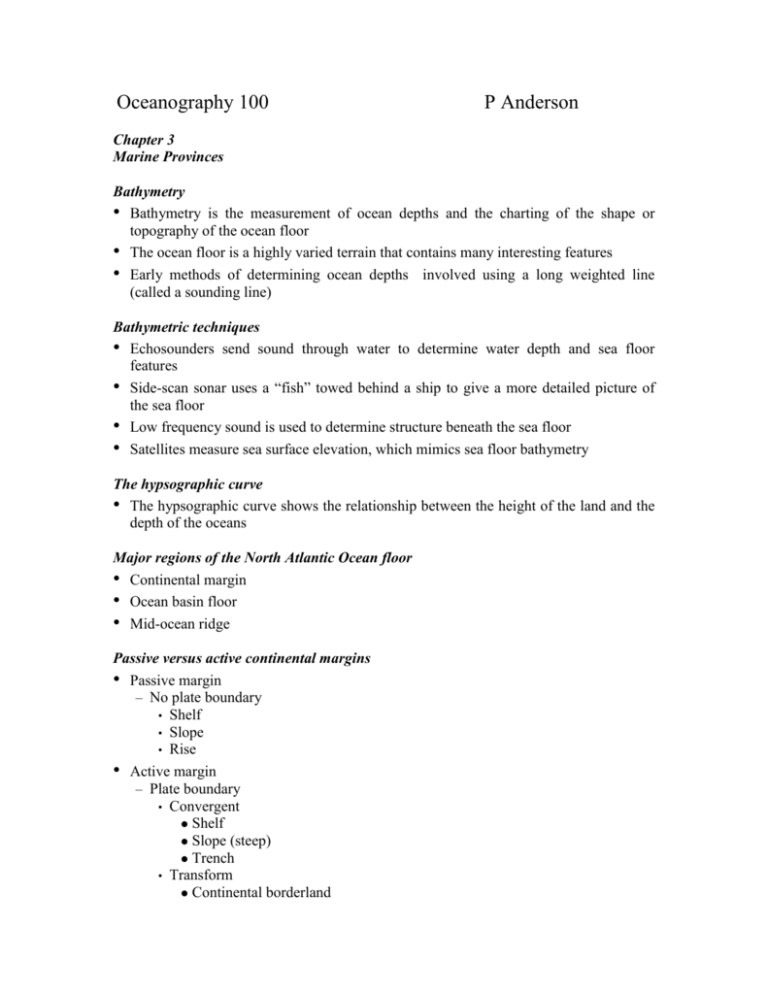
Oceanography 100 P Anderson Chapter 3 Marine Provinces Bathymetry • Bathymetry is the measurement of ocean depths and the charting of the shape or topography of the ocean floor • The ocean floor is a highly varied terrain that contains many interesting features • Early methods of determining ocean depths involved using a long weighted line (called a sounding line) Bathymetric techniques • Echosounders send sound through water to determine water depth and sea floor features • Side-scan sonar uses a “fish” towed behind a ship to give a more detailed picture of the sea floor • Low frequency sound is used to determine structure beneath the sea floor • Satellites measure sea surface elevation, which mimics sea floor bathymetry The hypsographic curve • The hypsographic curve shows the relationship between the height of the land and the depth of the oceans Major regions of the North Atlantic Ocean floor • Continental margin • Ocean basin floor • Mid-ocean ridge Passive versus active continental margins • Passive margin – No plate boundary • Shelf • Slope • Rise • Active margin – Plate boundary • Convergent Shelf Slope (steep) Trench • Transform Continental borderland Submarine canyons and deep-sea fans • Turbidity currents carve submarine canyons into the slope and shelf • Debris from turbidity currents creates graded bedding deposits and deep-sea fans • Deep flat areas formed by suspension settling • Volcanic peaks poke through the sediment – Abyssal hills (seaknolls) – Seamounts – Tablemounts (guyots) Ocean trenches • Deepest parts of the ocean • Formed by plate convergence • Most trenches are in the Pacific Ocean • Associated with volcanic arcs – Island arc – Continental arc The mid-ocean ridge • Circles the globe like the seam of a baseball • Mostly traverses the middle of ocean basins • A topographically high mountain range • Entirely volcanic in origin • Associated with plate divergence • In the Pacific Ocean, called the East Pacific Rise • In the Atlantic Ocean, called the Mid-Atlantic Ridge The Mid-Atlantic Ridge • Traverses the center of the Atlantic Ocean • Contains a central down-dropped rift valley • Comes above sea level in Iceland Features of the mid-ocean ridge • Rift valleys – Form when plates split apart – Down-dropped areas associated with faults and earthquakes • Pillow lava – Forms when hot lava comes into contact with cold seawater and quickly cools – Basalt composition Features of the mid-ocean ridge • Hydrothermal vents – Form when seawater is heated by magma – Black smokers emit hot water through chimneys – Associated with metal sulfide deposits and unusual lifeforms Transform faults and fracture zones • Transform Faults – Occur between segments of the mid-ocean ridge – Transform plate boundaries – Movement in opposite directions • Fracture Zones – Occur beyond segments of the mid-ocean ridge – Not plate boundaries – Movement in the same direction
